Timber Exports: Trends, Challenges, and New Opportunities
- September 13, 2024
- 0 comment
The global timber industry has long been a cornerstone of international trade, providing essential materials for industries such as construction, furniture, and manufacturing. As urbanization accelerates across the globe, and as sustainable materials become more valued, the timber export market is experiencing a significant shift. For those involved in the timber trade, understanding these evolving dynamics is important for staying competitive in this rapidly changing landscape.
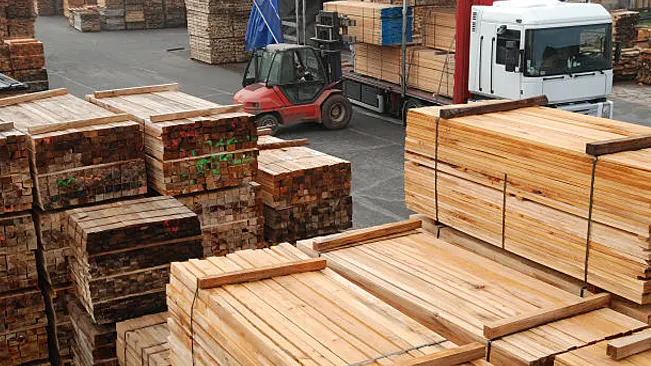
In this comprehensive guide, we will explore the most current trends driving timber demand, the challenges exporters face, and the new opportunities available for those ready to adapt and innovate in the timber export industry.
Global Trends in Timber Exports
To navigate the timber export market effectively, one must first understand the key trends shaping demand across the globe. Let’s take a closer look at the major developments that are driving change in the market.
1. Growing Demand in Emerging Markets
One of the most prominent trends is the rise in demand for timber in emerging markets. Countries across Asia, Africa, and the Middle East are experiencing rapid urbanization and infrastructure development, creating a booming market for timber products.
Asia
Countries like China and India, with their massive population growth and fast-paced development, are seeing an unprecedented need for timber.
Whether for construction, furniture manufacturing, or infrastructure projects, timber remains a core material driving these economies.
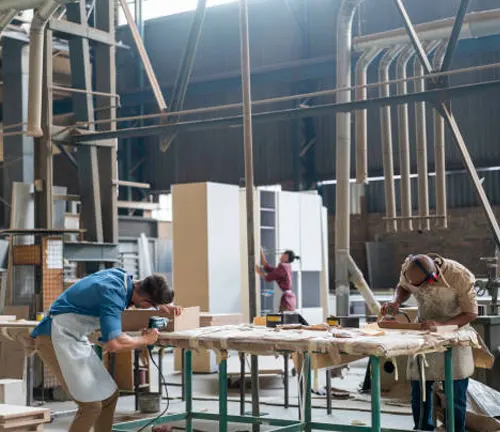
Africa
Urbanization in Africa is fueling an increasing demand for affordable housing and commercial construction, with timber playing a central role. The continent’s growing cities, such as Lagos and Nairobi, are prime examples of markets where timber is essential for meeting rising housing and infrastructure needs.
2. Sustainability: A Global Imperative
Another trend shaping the timber export market is the global push toward sustainability. More than ever, consumers and businesses alike are prioritizing environmentally responsible products. As a result, sustainably sourced timber is now a critical requirement, especially in high-value markets like Europe and North America.
Europe
- European countries are at the forefront of sustainability initiatives, and regulations around sustainable sourcing of timber are becoming stricter. Timber certified by bodies like the Forest Stewardship Council (FSC) is highly sought after, especially in green construction projects and sustainable building materials.
3. Technological Innovations in Timber Production
Technological advancements are also driving significant changes in how timber is produced and processed. These innovations are making the industry more efficient, sustainable, and capable of meeting the increasing global demand.
Cross-Laminated Timber (CLT)
CLT is transforming the construction industry by offering a sustainable, lightweight, and durable alternative to steel and concrete. It has become a go-to material in eco-friendly construction, with demand growing in both developed and emerging markets.

Automation in Sawmills
Automated machinery and AI-driven processes are allowing sawmills to increase efficiency, reduce waste, and improve product quality. These technologies are not only improving profitability but also enabling more sustainable production practices.
Challenges Facing Timber Exporters
While the trends point to a growing and evolving market, the path forward is not without its challenges. Timber exporters must be prepared to navigate complex legal, environmental, and logistical hurdles to succeed in the global marketplace.
1. Regulatory Compliance and Certification
One of the most significant challenges timber exporters face is complying with a complex web of international regulations and certification requirements. Markets in Europe, North America, and Asia often have strict standards that exporters must meet.
- Forest Stewardship Council (FSC):
This certification guarantees that timber is sourced from responsibly managed forests. Gaining FSC certification is essential for exporters aiming to enter premium markets in regions like Europe, where environmental standards are rigorously enforced. - Programme for the Endorsement of Forest Certification (PEFC):
PEFC is another globally recognized certification that ensures sustainable forest management practices. Exporters who carry this certification open doors to new opportunities, particularly in Europe and Asia.
Regulations like the EU Timber Regulation (EUTR) and the Lacey Act (U.S.) demand that timber exporters provide detailed documentation on the legality and sustainability of their timber sources. Non-compliance can result in heavy penalties or market access restrictions.

2. Sustainability Pressures
Sustainability is not just a trend; it’s becoming a baseline expectation in many markets. As governments and businesses increasingly prioritize eco-friendly products, timber exporters must be prepared to meet the rising demand for sustainably sourced products.
- Europe and North America: These regions have embraced sustainability in both the private and public sectors. Government procurement policies often require timber used in construction and manufacturing to be certified, while consumers prefer products that align with their environmental values.
3. Trade Barriers and Tariffs
Exporters must also navigate a complex landscape of trade barriers and tariffs, which can significantly impact profitability.
Tariffs
Various countries impose tariffs on timber imports, which can drive up costs for exporters and make their products less competitive. For example, tariffs in the Middle East can substantially increase the price of imported timber, making it challenging for exporters to compete with local suppliers.
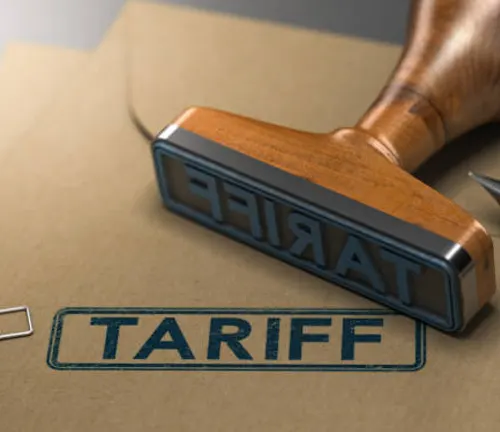
Non-tariff Barriers
These include customs delays, environmental regulations, or quotas imposed by importing countries. Navigating these barriers requires careful planning, strong documentation, and an understanding of the legal landscape in each market.
4. Currency Fluctuations
Currency volatility is another significant challenge facing timber exporters. Exchange rate fluctuations can directly affect profit margins and pricing strategies, especially when trading in multiple currencies. A strong domestic currency can make exports more expensive for foreign buyers, while a weaker currency may reduce profit margins.
New Opportunities for Timber Exporters
Despite these challenges, the timber export market is ripe with opportunities for those who can navigate its complexities. Let’s explore where these new opportunities lie.
1. Expanding into Emerging Markets
Emerging markets in regions like Africa, Mexico, and the Middle East present exciting opportunities for timber exporters. As these regions invest in infrastructure and housing, the demand for timber will continue to grow.
In Africa, rapid urbanization and population growth are driving the need for affordable housing, which relies heavily on timber. For exporters, this represents a chance to establish a strong foothold in a growing market.
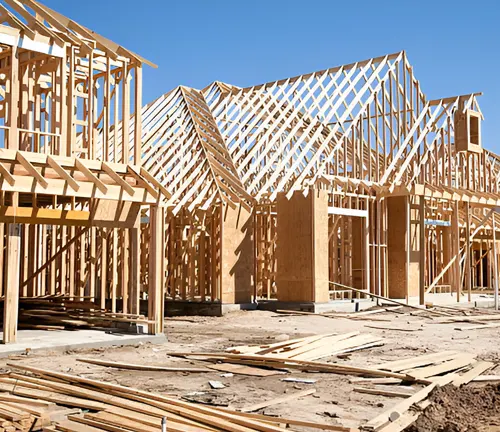
2. Leveraging Free Trade Agreements (FTAs)
Free Trade Agreements can significantly lower trade barriers and tariffs, providing exporters with new opportunities to access foreign markets more easily.
- U.S.-Canada Softwood Lumber Agreement: This FTA has been a critical driver in facilitating smooth timber trade between these two nations. Exporters should leverage similar FTAs to reduce costs and enhance their competitive position in international markets.
3. Opportunities in Green Construction
The rise of green building practices presents a unique opportunity for timber exporters, particularly those supplying innovative materials like Cross-Laminated Timber (CLT).
Green construction is becoming more prominent worldwide, especially in Europe and North America. As these regions look for sustainable alternatives to traditional materials like concrete and steel, CLT is emerging as a preferred choice.

Exporters who specialize in sustainable timber will find new opportunities in this growing sector.
4. Technological Advancements in Supply Chains
Timber exporters who embrace modern technology to optimize their supply chains will have a competitive advantage in the market.
- Blockchain Technology: Blockchain provides traceability and transparency in the timber supply chain, ensuring that timber is ethically sourced and compliant with regulations. Exporters can leverage blockchain to build trust with buyers and reduce the risk of illegal logging claims.
- AI in Inventory Management: AI tools can help optimize inventory control, reduce overproduction, and minimize waste. By adopting these technologies, timber exporters can cut costs and improve operational efficiency.
Conclusion
The timber export market is full of potential, but success requires a strategic approach. Exporters must be prepared to navigate market trends, meet sustainability standards, and overcome regulatory challenges to succeed. By expanding into emerging markets, leveraging Free Trade Agreements, and utilizing technological advancements, timber exporters can position themselves for growth and capitalize on new opportunities in the evolving global marketplace.
As demand for timber continues to rise, particularly in developing regions and eco-conscious markets, the exporters who adapt to these trends will not only survive but thrive in the global timber industry.
Frequently Asked Questions (FAQ’s)
- What are the current trends in timber exports?
Timber demand is growing due to urbanization, sustainable construction, and infrastructure projects in developing regions like Asia and Africa. - Which regions show the highest demand for timber?
Asia, Africa, and Europe are leading in timber imports, with Asia focusing on construction and Europe demanding sustainable timber. - How does sustainability affect timber exports?
Increasing global emphasis on sustainable sourcing means certifications like FSC or PEFC are crucial for entering eco-conscious markets like Europe and North America. - What certifications are necessary for timber exports?
The Forest Stewardship Council (FSC) and Programme for the Endorsement of Forest Certification (PEFC) are widely accepted certifications ensuring sustainability. - What are the biggest challenges for timber exporters?
Challenges include meeting legal requirements, navigating trade barriers, currency fluctuations, and adhering to sustainability standards. - How do trade barriers impact timber exports?
Trade tariffs, quotas, and non-tariff barriers like customs delays can increase costs and affect market access. - What role does technology play in the timber export market?
Innovations like automation in sawmills and AI in supply chain management are improving efficiency, reducing costs, and enhancing production. - Why are Free Trade Agreements (FTAs) important for timber exporters?
FTAs reduce tariffs and provide smoother access to international markets, making exports more competitive. - How does climate change impact the timber industry?
Climate change introduces risks like wildfires, pests, and shifting weather patterns, affecting timber supply and logging seasons. - What opportunities are emerging in the timber export market?
Growing urbanization in emerging markets, rising demand for sustainable materials, and technological advancements present new growth opportunities for timber exporters.

James Wilson
Forestry AuthorJames Wilson has over 15 years of experience in forestry economics, specializing in sustainable practices, investment opportunities, and financial management. He has contributed to notable publications like "Forestry Today" and "EcoFinance Journal" and is known for providing practical and insightful advice. With a degree in Environmental Economics, James stays updated through continuous learning and active participation in industry discussions. Outside work, he enjoys hiking and nature photography, bringing a well-rounded perspective to his professional role.

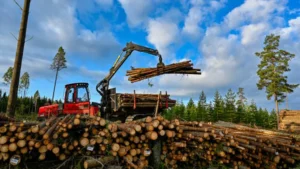
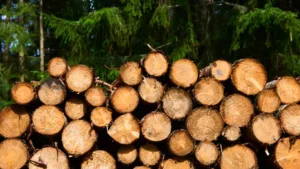
Leave your comment